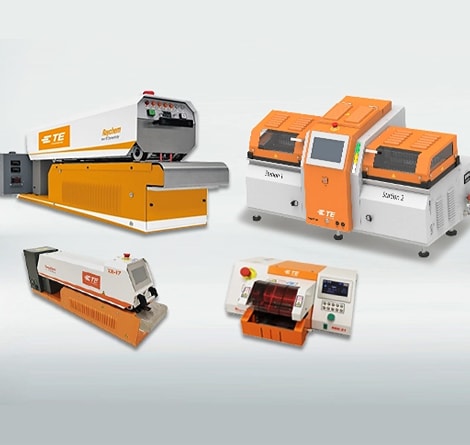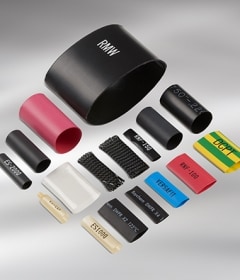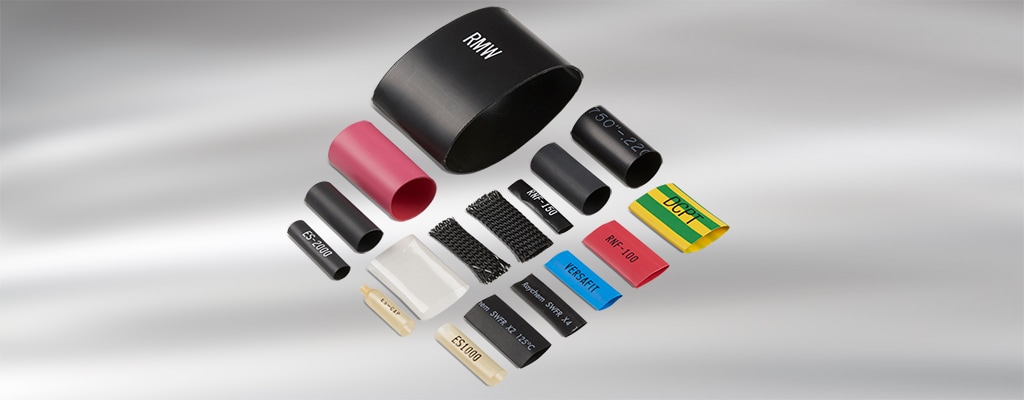
TE Connectivity Heat Shrink Tubing
HOW TO CORRECTLY MEASURE SINGLE WALL HEAT SHRINKABLE TUBING
INTRODUCTION
Heat shrinkable tubing is soft and stretchable. In addition it changes shape when it is recovered (Shrunk). This paper is intended to give guidelines on how to check the most common measurements when measuring the dimensions of heat shrinkable tubing. Please remember to check with Sales or Field Application Engineering if you have any specific questions about measuring the tubing, or figuring out which type and size of tubing is correct for your application.
Inside Diameter (ID), Outside Diameter (OD), and Wall Thickness
It is important to remember, when measuring OD or ID heat shrinkable tubing can be easily stretched. What this means in practical terms is, if you use most traditional ways to measure inside diameter you can either stretch the tubing or cause it to deform to be more oval than round. In both cases you can get an incorrect, larger reading than what the true diameter is. It should be noted that most tubing does not have a maximum ID/ODspecification in the expanded form(as received). It is the minimum ID that is important before recovery, and the maximum ID after recovery.
To get around this problem, the best method involves using a set of plug gages of known sizes to determine the ID of tubing. This causes the tubing to see uniform force all the way around and prevents it from being pulled into an oval. Start with a size at the low end of the specification and slowly put larger and larger plug gages in the tubing until you find one that will not go in easily. We take the plug gages so they slide easily and don’t hang up in elastomers and very flexible tubing. You do not want to force it in as you could stretch the tubing giving you a false, high reading. The largest gage that slides in snugly is the ID of the tubing.
Once you have identified the correct ID, the OD can easily be measured with a set of calipers while the plug gage is still inside. This will keep you from accidently compressing the tubing and getting a false, low reading.
Wall thickness should only be measured on fully recovered tubing. You start by recovering a sample in an oven or heat gun and letting it cool until you can handle it with your hands. Then measure the ID and OD as above. Average wall thickness can then easily be calculated by subtracting the ID from the OD. You can use a pin micrometer to get single point measurements of the wall. However, be very careful with the force applied as the micrometer can compress the tubing causing false low readings.
Dual wall (adhesive lined) tubing needs to be treated differently because the adhesive will melt and flow. Ask your FAEfor additional advice on measuring there covered dimensions of dual wall tubing.
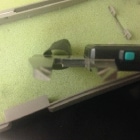
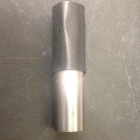
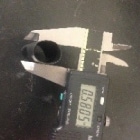
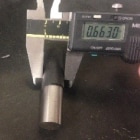
Color
When the tubing is expanded it becomes a lighter color. Black can become grey, red can turn more of a pink color, etc. What this means is that the color as received may not be the final color after it is recovered. This is not a defect, as color is judged on the recovered tubing, not the as received (or fully expanded) tubing. A sample should be cut, fully recovered and allowed to cool to properly evaluate the color.
Long Change
In general, just as tubing will shrink in diameter when heated, it will also shrink in length. This is known by many terms including; Long Change, Longitudinal Change, and Shrinkage.No matter what term you use, it is a % measurement of how much the tubing shortened during recovery. The typical specification for tubing is +0/ -10%. However, this does not apply to all heat shrink tubing, so make sure you review what the specification is for the tubing you are using.
As with other measurements, the process seems simple. Measure a piece of tubing, then recover it, measure it a second time, and use the following formula:
- Longitudinal Change:
% L.C. = (L1 - L2) / L2 X 100
- Where:
L1 = Length after recovery
L2 = Length before recovery
Although the formula seems easy, there are a number of simple errors that can lead to incorrect measurements. These are
The measurement tool not being accurate enough to measure the small change.
Solution: Use a measurement tool with better resolution or longer piece of tubing.
The oven temperature is too low and tubing may not shrink fully. Shrinkage is only guaranteed for tubing recovered at the correct temperature.
Solution: Make sure you use an oven or heat gun capable of maintaining the correct temperature.
When using an oven, the tubing can be sticky when hot and stick to the surface of the tray when heated, keeping it from shrinking as much as it would have otherwise.
Solution: Recover on wire racks or on trays that have a non-stick surface to minimize the tubing sticking. A tray with talc in it can also be used.
The tubing stretched during measurements prior to recovery, causing it to shrink more than expected
Solution: Care has to be taken when handling the tubing during the application and when preparing the sample.
Conclusion
Due to the fact heat shrink tubing byits very nature is stretchy and changes shape, care must be taken when making dimensional measurements. However, by using the techniques in this paper you should be able to get accurate and consistent results.
